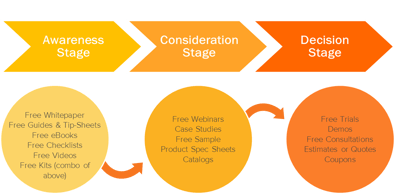Having a simple, well-defined sales process is key to successfully managing your salespeople and your sales pipeline. Follow these rules to ensure your process is a solid one.

RULE 1: The starting point for defining a sales process should be after an understanding of how your target persona is engaging with your product and services. The buying cycle will offer a road map for how and when to communicate with potential customers. Today’s prospect is a very informed and savvy one – the Internet and social media have flipped the balance in the buyers favor. As a business owner, it is imperative to understand the way your potential customers are engaging, and/or want to be engaged with. Inbound Marketing is a great solution to this challenge.
RULE 2: Define each stage with valid actions that your persona is doing, rather than basing them off of perceptions. There is a difference in your target persona actually confirming they have the funds allocated to pay for the product or service vs. a sales rep “assuming” that the funds will be available due to the importance the customer has placed on the campaign or program.
RULE 3: Simplify your process: use only the stages you need to move the needle as desired. Overly complex sales processes will result in opportunities sitting idle in various stages solely due to that particular phase lacking clear definition, coupled with inflated pipelines.
Finally, you should always keep in mind you should never look at a sales process as set in stone. It should be driven by your customer’s buying cycle and habits. Given these are always changing, you should be constantly reworking your sales process and adjust it as necessary. Doing this practice will pay off handsomely over time, plus keep you ahead competitors.




